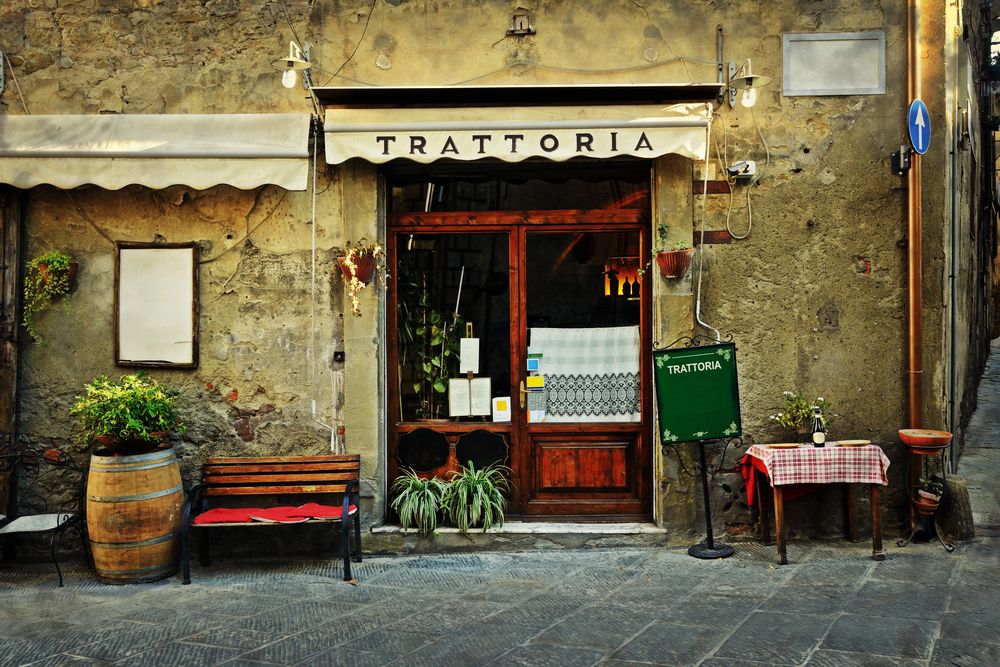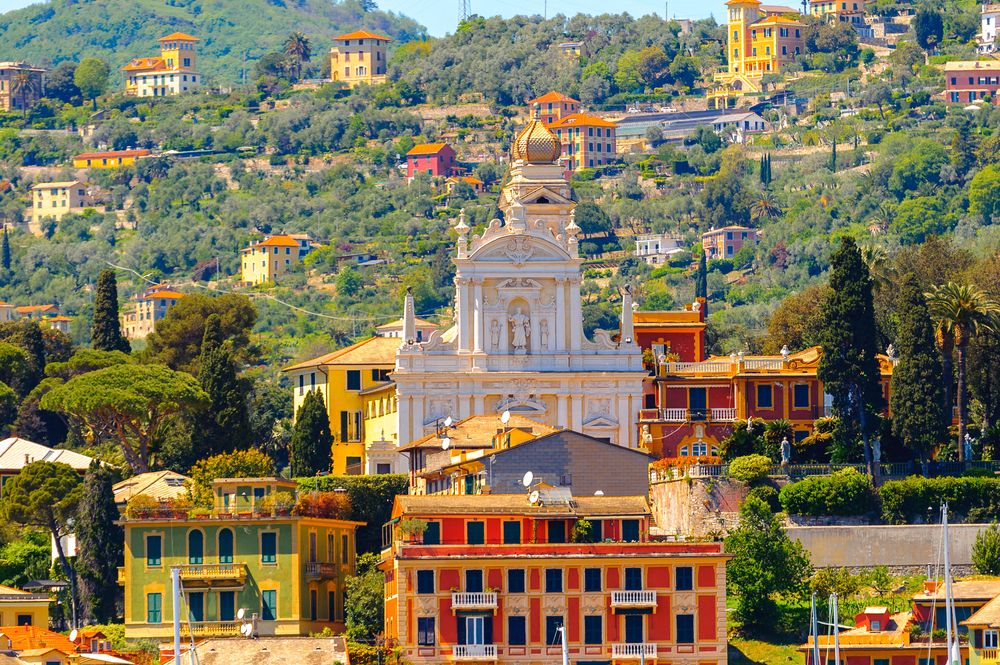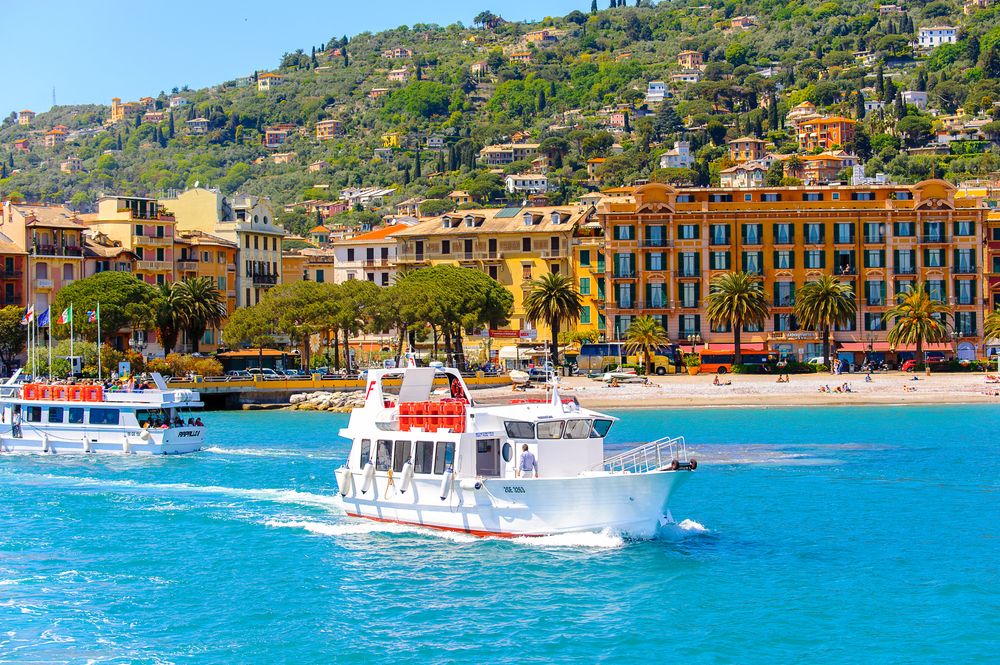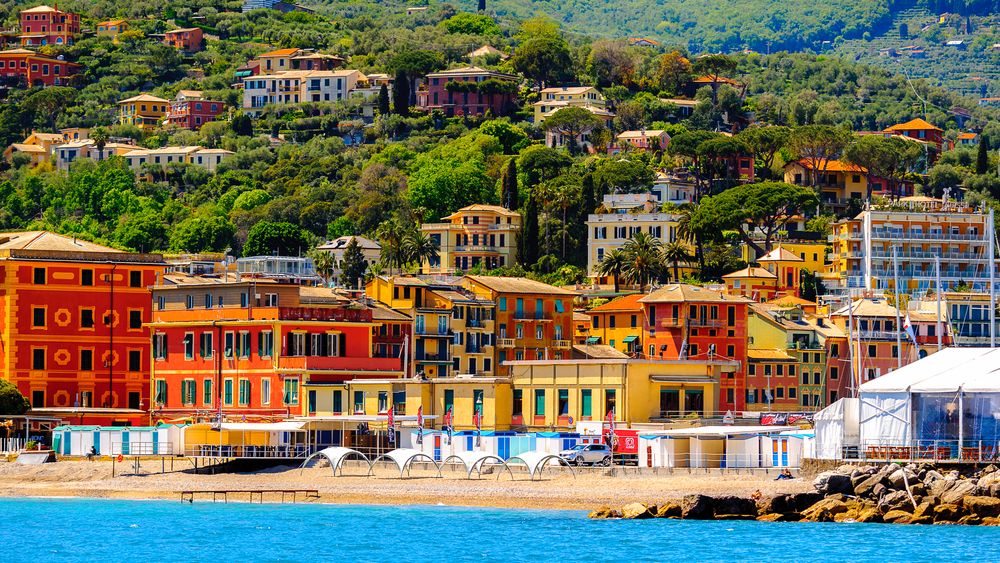The food in Santa Margherita Ligure weaves a story as layered as its flavors. This charming town on the Italian Riviera has shaped a culinary identity all its own, and it’s taken centuries to get there. Ligurian cuisine in Santa Margherita draws on fresh seafood, local herbs, and olive oil—ingredients that have been at the heart of their dishes since Roman times.
Strolling through Santa Margherita, you’ll spot restaurants serving traditional Ligurian specialties that echo the town’s deep ties to the sea. The steep terraced slopes aren’t just for show—they’ve long supported the basil, olives, and other Mediterranean plants that make this food so distinctive.
Find available hotels and vacation homes instantly. No fees, best rates guaranteed!
Check Availability Now
If you visit this grande dame of the Riviera di Levante, get ready for a real taste of history. The seafood here isn’t just about eating; it’s a living connection to generations of fishermen who’ve worked the Ligurian Sea. Local families have handed down recipes, keeping flavors alive that capture the spirit of this coastal haven better than any textbook could.
Origins of Ligurian Cuisine in Santa Margherita Ligure
Ligurian cuisine in Santa Margherita Ligure has roots tangled up in ancient traditions and the Mediterranean’s bounty. Local ingredients and cooking styles grew and changed as maritime trade and outside influences rolled in over the centuries.
Influence of the Republic of Genoa
Dig into the food history of Santa Margherita Ligure and you’ll quickly run into the legacy of the Republic of Genoa. During Genoa’s days of maritime power, this small fishing village gained new spices and cooking ideas from all over the Mediterranean.
Genoa’s wealth brought olive trees to the steep hills around Santa Margherita. People started using olive oil instead of the animal fats common up north.
Thanks to Genoese trade, basil made its way here—now you can’t imagine local pesto without it. The Republic influenced how locals preserved food, too, since sailors needed provisions that could survive long trips.
Evolution within Fishing Villages
Santa Margherita Ligure’s roots as a fishing village still show up on the plate. Fishermen brought in anchovies, shrimp, and all sorts of Mediterranean fish that became daily staples.
The town’s seaside location meant fresh seafood always landed on tables. Fishermen’s wives cooked up simple, tasty dishes using whatever the boats hauled in. Recipes like ciuppin (fish stew) came from this practical approach.
With farmland scarce along the rocky coast, locals got creative. They built terraced gardens above the town to grow herbs, zucchini, and other veggies to go with the seafood.
Fishing boats would leave at dawn and return with the day’s catch, which families and neighbors would prepare and enjoy together. This tradition led to straightforward cooking that lets fresh ingredients shine, rather than covering them up.
Signature Dishes and Local Specialties
Santa Margherita Ligure’s cuisine really captures what Ligurian food is all about: fresh seafood, local herbs, and recipes that families have treasured for generations. The town’s culinary landscape offers both everyday favorites and special dishes that speak to its coastal roots.
Pesto Genovese and Trofie al Pesto
Pesto Genovese is the star of Ligurian cooking. In Santa Margherita, cooks whip up this bright green sauce from local basil, pine nuts, garlic, Parmigiano-Reggiano, Pecorino, and good olive oil. The basil grown here has small, super-aromatic leaves—nothing quite like it.
Trofie pasta, twisted by hand in many local kitchens, is the classic partner for pesto. Trofie al pesto often includes green beans and potatoes, making it a one-dish meal that’s hard to beat.
Local Tip: Swing by the market for fresh pesto to take home, or sign up for a cooking class if you’re curious about learning from the pros.
Seafood Traditions
Santa Margherita Ligure shines when it comes to seafood. Fresh catches roll in daily at restaurants and markets.
Favorites include:
- Acciughe ripiene (stuffed anchovies)
- Baccalà (salt cod), prepared several ways
- Cappon magro (an elaborate seafood and veggie salad)
- Stoccafisso (air-dried cod) in umido (stewed)
Shrimp from the Ligurian Sea tastes especially sweet, and locals keep preparations simple to let that flavor through. Most recipes use olive oil, not butter, so the seafood stands out.
Coniglio alla ligure (Ligurian-style braised rabbit) mixes rabbit with local olives and pine nuts for a dish that shows off the region’s skill with meats, too.
Classic Baked and Pasta Dishes
Focaccia alla genovese is a must-try. Bakers make this dimpled flatbread with olive oil and coarse salt, and locals eat it as a snack or alongside meals.
Farinata, a chickpea flour pancake, is another street food favorite.
Beyond trofie, you’ll find:
- Pansoti con salsa di noci (stuffed pasta with walnut sauce)
- Corzetti stampati (coin-shaped pasta stamped with designs)
- Trenette al pesto (flat pasta with pesto)
Torta pasqualina, a savory pie packed with greens, cheese, and eggs, really shows off what you can do with vegetables. The classic version features 33 layers of thin dough—one for each year of Christ’s life, if you believe the tradition.
From seaside villas to charming hotels, find your perfect Mediterranean retreat with breathtaking Ligurian Sea views.
Browse Accommodations Now
Iconic Sweets and Breads
Santa Margherita’s sweets reflect its ties to the sea and access to Mediterranean flavors.
Canestrelli are delicate, flower-shaped shortbread cookies dusted with powdered sugar—perfect with coffee. Their subtle vanilla flavor makes them easy to love.
Pandolce genovese pops up during the holidays. It’s a dense, not-too-sweet bread with pine nuts, candied fruit, and raisins—a cousin to panettone, but with its own personality.
Seasonal Treats:
- Gobeletti (jam-filled tarts)
- Baci di dama (hazelnut sandwich cookies)
- Amaretti morbidi (soft almond cookies)
Plenty of bakeries still use wood-fired ovens, giving their breads and cookies a flavor and texture that connect today’s visitors with centuries of tradition.
Santa Margherita Ligure’s Culinary Heritage
The coastal town of Santa Margherita Ligure offers a food tradition shaped by its seaside setting and what the land provides. The cuisine here leans into simplicity and flavor, letting fresh seafood and local produce do the talking.
Role of Local Ingredients and Simplicity
Cooks in Santa Margherita work with what the region naturally gives them. Olive oil forms the backbone of almost every dish. The local olives yield a light, fruity oil—ideal for drizzling on focaccia or blending into pesto.
Wild herbs like rosemary, thyme, and marjoram grow on the hillsides, and folks pick them fresh for cooking.
The local kitchen values simplicity. There’s no need for long ingredient lists. Instead, cooks bring out the best in each ingredient through careful, often minimal, preparation.
Menus change with the seasons and with what’s available at the markets. Food festivals celebrate harvests, like the olive-picking season in late autumn.
Impact of the Mediterranean Sea
The Mediterranean shapes daily life—and what ends up on the table—in Santa Margherita Ligure. Fishing boats still come into the harbor each morning with catches that appear on lunch menus just hours later.
Seafood shows up in every form, from simply grilled fish with olive oil and lemon to hearty stews that mix the day’s best. The Gulf of Tigullio provides anchovies, sea bream, and mussels in abundance.
If you walk the harbor, you might see fishermen mending nets or sorting their catch. That direct link between sea and table remains strong.
Many traditional recipes combine seafood with local vegetables. Stuffed mussels with herbs and breadcrumbs, or fish soup with seasonal veggies, are just a couple of examples.
Relationship with Nearby Coastal Towns
Every town along the Ligurian coast has its own food specialty, making for a wonderfully diverse scene. Santa Margherita shares some traditions with Portofino, Rapallo, and Camogli, but each place keeps a few secrets.
Camogli is known for its fish festivals, Portofino for upscale seafood dining. Rapallo brings its own focaccia varieties to the table.
Bakeries in Santa Margherita turn out some of the region’s best focaccia—thin, crunchy outside, soft inside, and glistening with olive oil. Two bakeries in town are local legends and easily compete with Genoa’s best.
The Cinque Terre region, just a short boat ride away, influences Santa Margherita’s cooking with its terraced vineyards and wines that pair beautifully with seafood. Flavors and techniques have mingled here for generations.
Influence of Trade, Travel, and Regional Interactions
Trade routes and waves of travelers have shaped Santa Margherita Ligure’s food for centuries. The town’s food traditions reveal how ingredients and cooking styles have moved along with merchants and visitors.
Contributions from Genoa and the Italian Riviera
Genoa’s influence runs deep in Santa Margherita Ligure’s kitchens. Genoese traders brought home spices and ingredients that spiced up local dishes. You’ll taste this history in the famous pesto alla Genovese, made with basil from the terraced hills.
Neighboring towns along the Riviera di Levante share many food traditions. Each community adds its own spin to seafood dishes passed down through the years.
Ligurian cooks use olive oil instead of butter or cream, a choice that ties Santa Margherita to other Mediterranean communities. This healthy habit has stuck around for good reason.
Tourism and Gastronomy
When wealthy folks from Turin and Milan started vacationing in Santa Margherita Ligure, they brought new dining expectations. Local trattorias adapted, pleasing these visitors while keeping old recipes alive.
Elegant hotels, waterfront apartments, and vacation rentals with instant confirmation. Pastel-colored buildings and palm-lined promenades await!
See Available Properties
The opening of luxury hotels like the Imperiale Palace Hotel in the early 1900s drew chefs who blended local ingredients with continental flair. You can still taste these refined takes on Ligurian classics in hotel restaurants.
Tourism keeps shaping the food scene. Restaurants near the harbor, where yachts dock, often serve upscale versions of traditional fishermen’s dishes. But wander a few blocks and you’ll find family-run spots sticking to the same honest food they’ve always made.
Travel between Liguria and Pisa has left a mark, too, giving the cuisine a distinctly Ligurian feel with a touch of broader Italian influence.
Cultural and Natural Influences on Local Cuisine
Santa Margherita Ligure’s food reflects its stunning coastline, history, and one-of-a-kind climate. These factors come together to create flavors that really belong to this place.
Elegant Villas and Historical Landmarks
Santa Margherita Ligure’s grand villas have helped shape local food customs. Villa Durazzo and its impressive gardens once introduced exotic plants to the area. Wealthy families who owned these villas hired chefs who mixed Ligurian recipes with international tricks.
The Castello di Santa Margherita Ligure stands as a symbol of the town’s maritime heritage, which put seafood front and center. Around the Church of San Giacomo di Corte, you’ll find small restaurants still serving recipes handed down for generations.
When the region joined the Kingdom of Sardinia in the 1800s, Sardinian touches like pecorino cheese found their way into Ligurian dishes, creating flavor combos that locals still love today.
Natural Scenery, Beaches, and Outdoor Activities
The Pearl of Tigullio’s stunning landscape shapes its food culture in ways you can taste. Fishermen haul their daily catch straight from the clear waters of Tigullio Gulf to local restaurants, so dishes like marinated anchovies and seafood risotto always taste extra fresh.
Hiking through Portofino Regional Natural Park, you’ll brush past wild herbs that end up in traditional recipes. Borage, for example—this herb pops up everywhere in the park and gives pansoti (Ligurian stuffed pasta) its unmistakable character.
Boat trips out to see the Christ of the Abyss statue often come with meals that really lean into that sea-to-table vibe. Even snorkeling and diving here make you appreciate the seafood on your plate a little more—there’s something about seeing where your meal comes from that just hits differently.
Plenty of private beaches set up dining spots where you can dig into regional specialties, all while soaking in those Mediterranean views that inspired so many local dishes.
Mild Climate and Seasonal Ingredients
The region’s mild climate makes it a paradise for growing the ingredients Ligurian cuisine is built on. With gentle winters and warm summers, olive trees thrive year-round, giving us that signature Ligurian olive oil that goes into pesto, focaccia, and honestly, almost everything.
Spring brings a burst of wild herbs and tender veggies, perfect for preboggion—a classic mix of foraged greens. When summer rolls around, sweet basil takes center stage for real-deal pesto alla genovese, probably the most famous thing to come out of Liguria’s kitchens.
Come fall, locals harvest chestnuts for desserts and hearty meals. Citrus trees—lemons and oranges—love the Mediterranean sun, so you’ll find their flavors in both sweet and savory dishes.
In winter, preserved foods like salted anchovies take over, a reminder of how Ligurian cuisine adapted to the seasons long before it was fashionable. Thanks to the climate, fresh veggies are always around, so plant-based eating has been part of the food culture here way before it became a trend.
Modern Developments and Preservation of Tradition
Santa Margherita Ligure somehow manages to blend culinary creativity with a real respect for tradition. Local chefs and food lovers keep classic Ligurian dishes alive, but they’re not afraid to tweak them for modern tastes.
Restaurants, Food Festivals, and Gastronomic Events
You’ll stumble across cozy trattorias and stylish modern restaurants all over Santa Margherita Ligure. Many places serve up cappon magro (that elaborate seafood and veggie salad) and cima alla genovese (stuffed meat), sticking to recipes handed down over generations.
Every year, the Festa del Mare brings the community together with food stalls selling fresh seafood. Local restaurants jump in, offering special menus for the occasion.
During the summer, Piazza Martiri della Libertà turns into an evening food market. You can sample local specialties and catch area chefs showing off their skills in live cooking demos.
Some hotels even run cooking classes where you get to make authentic pesto the old-school way—with a mortar and pestle. Around here, that’s a badge of honor.
Revival of Ancient Recipes
Local food historians dig deep to revive almost-lost Ligurian dishes, making sure they don’t disappear for good.
The “Ricette della Nonna” project collects family recipes from older residents, building a living archive of traditional cooking. Some of these recipes go back centuries.
You’ll spot “antica ricetta” (ancient recipe) on menus, signaling that the kitchen is sticking to the old ways—maybe with special seafood techniques or rare pasta shapes.
Cooking schools around town offer courses focused on historical Ligurian cuisine, passing down techniques you won’t find in modern cookbooks. These classes help locals and visitors alike tap into the region’s food roots.
Sustainable Fishing and Local Sourcing
Fishing still plays a big role in Santa Margherita’s economy and food scene. Every morning, you’ll spot small fishing boats heading out, then returning with the day’s catch for local restaurants.
Locals have really gotten behind sustainable fishing, trying to keep the marine ecosystem healthy for the long haul. Plenty of restaurants proudly show off their certifications—they want you to know they care about where their seafood comes from.
Walk into any eatery here and you’ll notice a real focus on “zero kilometer” ingredients. Basically, if it’s grown or caught nearby, it ends up on your plate.
Farmers markets make it easy for producers, chefs, and regular folks to connect face-to-face. On Wednesdays, there’s a lively market near the waterfront where you can pick up whatever’s in season, plus fresh herbs and some excellent local olive oil.
Wild herbs matter a lot here too. Locals who know the land still go out and gather the greens for preboggion, that classic wild mix you’ll taste in so many traditional dishes.
Easy booking across stunning accommodations from historic palazzos to modern retreats. Pristine beaches and crystal waters just moments away!
Secure Your Italian Getaway






